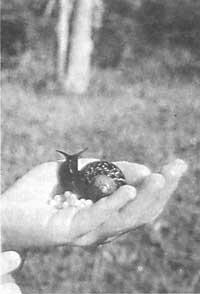Bare scarf: spleen
1989/10/01 Altonaga, Kepa - EHUko biologia irakaslea Iturria: Elhuyar aldizkaria
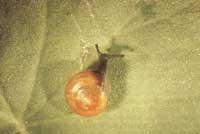
The species of rodents from all over the world, despite showing a great singularity in their exterior aspect, have preserved a fundamental unitary structure. To express itself in a simple way, it can be said that the body is formed by two elements. On the one hand, the longitudinal cephalopodium, that is, the head plus the foot, and on the other, the visceral sac lying dorsally on the cephalopodium (see figure 1A). In addition to the two components mentioned, it is very important the tegument that collects the visceral sac, that is, the mantle, which secretes the shell that gives its own shape to the rayasquillo. And it is that the shell is responsible for the silk of the snail.
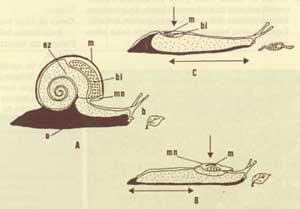
In the bazos, however, there is no visceral sac or visible shell. The body of the blasts is fusiform and the shell, if it existed, is hidden inside the soft body (see figures 1B and 1C). In this case, the shell is nothing more than a lime platelet.
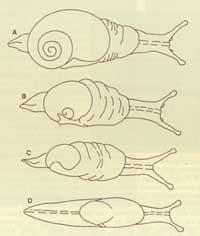
So far, paleontological studies have not explained the origin of serene, since the absence of a well-formed shell makes it impossible to suppress the fossil remains, so it does not facilitate the follow-up of the evolutionary development of serene. Therefore, our hypotheses about this history can only be fixed in arguments of comparative morphology, that is, incorrect data. From this path, in the current rodents are species that can be considered transitional forms between the coquillas and the coquillas (see figure 2).
Using this operation to carry out a comparative analysis between organs and systems, as well as to analyze the embryonic development of marrasquillas of different morphological types (see figure 3), a progressive loss of shells can be demonstrated, going through different median steps from male rodents to serene, and probably each of these morphological situations is the result of an adaptation to the different ecological demands.
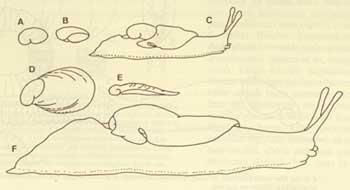
The loss of the shell of the strokes occurred, in general, as a result of two facts: besides the violent axial prolongation (a) of the body, there was a decrease (b) of the dorsal visceral sac, thus sinking the viscera in the body that grew longitudinally. However, as the dorsal bulge of the marrasquillo disappears inside the body, the shell itself was reduced, as the mantle was increasingly completely hidden.
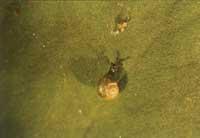
The total disappearance of the shell or deep restrictions, improved the body of these animals functionally, becoming efficient competitors of the snails. In fact, the reduction of the heavy and rigid shell has not only allowed a considerable increase in mobility, but has also allowed the use of very fine dens and the exploitation of new types of food. All this has compensated for the lack of coquilla: the coquilla takes care of dehydration and sun rays, offers mechanical protection, etc.

However, shells with shell are motionless, they last for a long time in the feeding places and follow the path of passive defense against the environmental factors, hiding inside the shell. On the contrary, naked snails are lighter and can penetrate through narrow grooves or be more easily buried in the ground, protecting themselves in sikatas or other unfavorable environmental conditions. In addition, every day they go out to look for food in the new areas, looking after the proper shelter, or often returning to the nest forever.
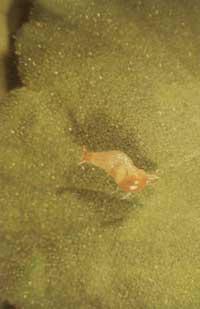
However, it can be observed without any difficulty that the “nakedness” has developed according to two schemes. On the one hand, in carnivorous rodents and, on the other, in the herbivorous and omnivorous species.
The specialization of carnivorous snails hunting earthworms caused the frontal prolongation of the body (see figure 1C) among other things. To him, of course, was linked the development of the pharynx, which became a predatory organ. The pharynx transports the acquired prey to the stomach and intestine (see figure 4). At the same time, some digestive tube structures were reduced due to the transition to a carnivorous diet. Along with them, the remarkable development of the body in the front caused the backward displacement of most viscera.
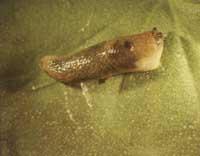
However, the specialization of herbivorous and omnivorous snails had nothing to do with food or with the method of obtaining food. The nudity of these snails seems to be related to a new capacity to take advantage of the resources of the environment. The increase in mobility offered them a greater competitive capacity, the possibility of taking advantage of new sources of food. In herbivorous bazaars, the front face of the cephalopodium has not changed. Despite the deep oppression and reduction suffered by the shell and mantle, they have retained their former location. However, the sinking of the long bowel and major liver caused a remarkable prolongation in the fusiform body of the back (see figure 1B).
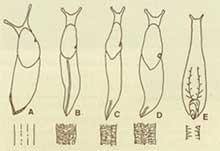
Despite having launched two large models of nudity, the loss of the shell has not been, at all, a rare phenomenon throughout the evolution of the snails, and the machine has been obtained independently on numerous occasions. To make us aware of this, we will include a series of numerical data. The ground rodents form 70 families, although according to the specialists this number is variable, of which 14 are calm, on other occasions with suits and nudes of lightning (see figure 5). In turn, the similarity between these phylogenetically different groups is enormous, but it is only due to its external aspect. Therefore, we are facing another example of evolutionary convergence. In fact, the disappearance of the shell can also be observed in many marine snails, but in this case it influences other environmental conditions, deducting analogous effects, that is, in the humid sea.

Gai honi buruzko eduki gehiago
Elhuyarrek garatutako teknologia



